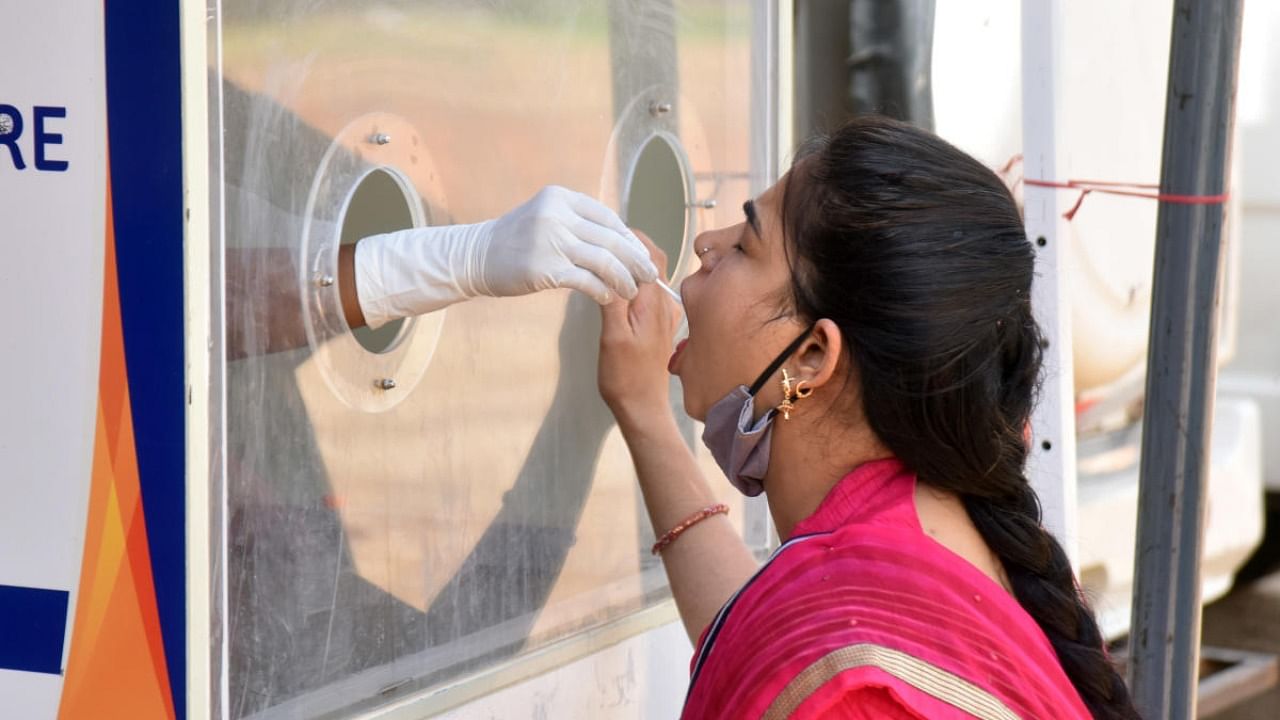

With the introduction of a more stringent lockdown from May 10, the state government has managed to reduce the number of Covid-19 cases by a third. Municipal officials believe the second wave has peaked. But just how much of this is due to official containment efforts is questionable.
On May 9, a day before Lockdown 2.0 fell into place, Bengaluru Urban, which has consistently been the hardest-hit district since the start of the outbreak last year, reported 20,897 new cases. However, six days into the renewed lockdown, on Friday, municipal officials found only 14,316 new cases.
Despite this, bed occupancy rates of critical cases have not declined on a par with declining numbers. On Saturday morning, among the 542 ICU beds and 537 ICU-ventilator beds allotted for Covid patients in the city, none was available. This has followed the trend for the last few weeks.
Pundits see a link to the city’s test rates which have been halved over the course of 30 days.
As per official data, the decline began on April 20. Between April 13 and 20, the municipality was conducting an average of 85,829 tests per day within its jurisdiction. Then, from April 21 to 27, the civic body did an average of 76,30 tests per day. Following that, from April 28 to March 4, an average of 62,018 tests were done per day — a rate which fell further to an average to 53,114 per day in the seven days between May 5 and 11.
In three days from May 12 to 14, an average of only 44,335 tests have been done per day. According to the Bruhat Bengaluru Mahanagara Palike (BBMP), about 25,000 of these daily are people getting tested of their own volition by going directly to labs - without any intervention on the part of the government.
However, BBMP Chief Commissioner, Gaurav Gupta, said that the case decline could not be attributed to reducing testing rates. “The numbers, if they have reduced a bit, are because of recent trends. I believe that could be because of prohibitive orders. More people are following Covid Appropriate Behavior now,” he said.
“There is a cycle to the outbreak. Mumbai’s second wave cases started in early March and peaked at around April 4 — with the maximum of 11,000 cases. Contrastingly, Bengaluru Urban peaked on or about May 5 to 6 with 23,000-odd cases,” he added.
Officially, the reduction in testing has been attributed to updated ICMR guidelines backing a targeted approach to testing. Gupta said that pressing issues had also prompted testing changes.
“There was indiscriminate and high testing which was leading to problems. Either our people were misusing it or they were just trying to meet the targets through any means possible,” he said.
A second issue was that labs were not processing the swab samples in time.
“The total lab capacity in Karnataka is 1.6 lakh samples per day and in the city we were testing about 1.2 lakh people per day. We were basically touching the limits. Our focus became testing vulnerable sections wherever vulnerable, symptomatic cases and primary contacts wherever possible. We have limited resources and we have decided to target it well,” he added.
Concern over rising deaths
There is growing concern, however, that the dwindling testing is failing to identify cases that will add to transmission and the death rate. “Every test not done is a life that could not be saved,” noted one expert.
This seems borne out by the data. Sanjeev Mysore, convenor of the data analysis think-tank, Jeevan Raksha, which has been analysing the pandemic since its start, pointed out that even as the city’s positive cases declined by 16 per cent in the last seven days, the number of deaths incongruously increased by 28 per cent.
He contrasted this with Mumbai, where data showed positive cases had reduced by two percent in the same period while deaths had risen by only 3 per cent. “Mumbai is an example of how management and containment have been gotten right. In Bengaluru, Covid cases doubled during April 14 to May 12, from 5 lakh to 10 lakh and mortality has increased from 5,000 to 9,000 during the same period. This is the cost of poor quality of testing,” Mysore said.
Officials insist otherwise. They say that labs were not performing as per the protocol. One issue was the labs were bypassing the government and information patients directly of their test result. “This creates panic among people. At the same time, in the system, there is no record of the positive case,” Mahadevapura zonal officials told DH.
“Nineteen labs were issued notices. Three were closed down. Because of our hammering, they have now started giving results in 24 hours,” Gupta said.
He added that that attention had to shift to other districts where more cases were being found. “That will be a challenge and that is for them to handle,” he said.